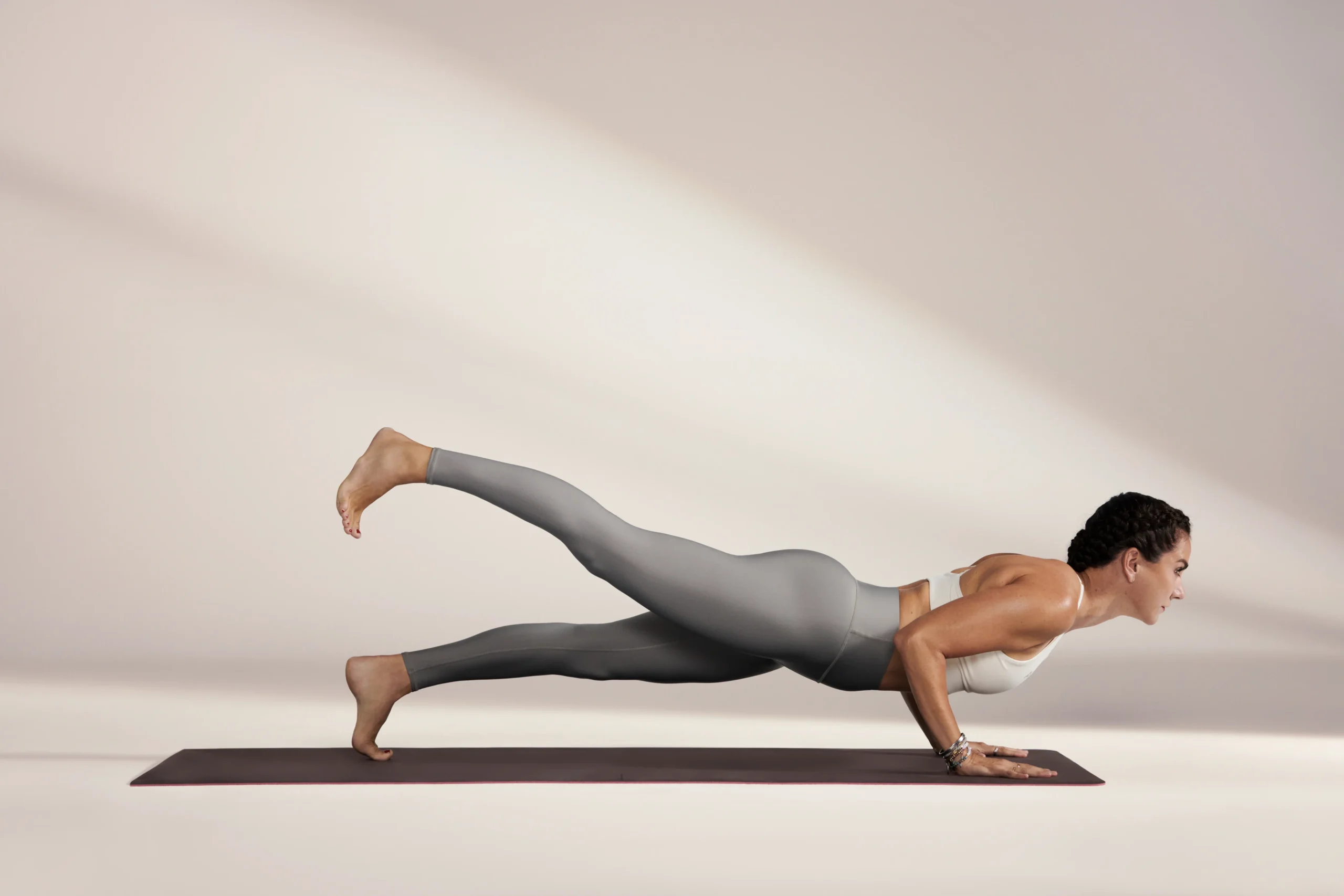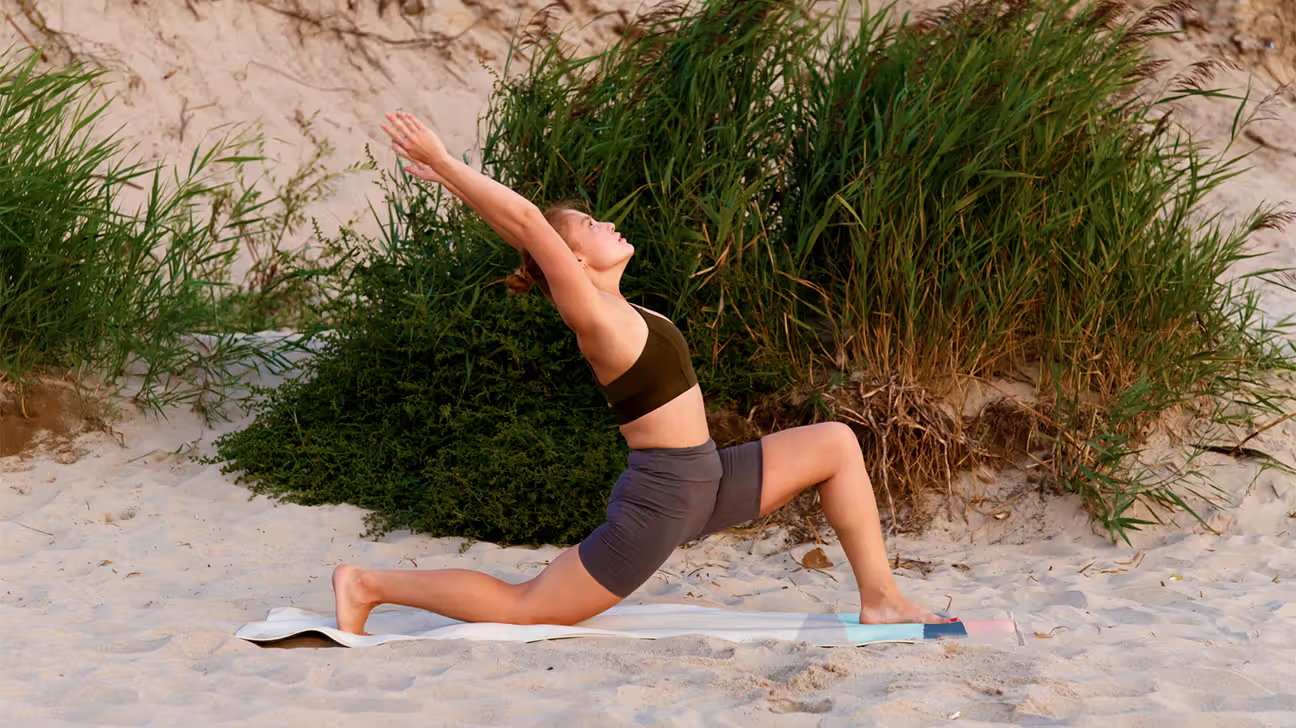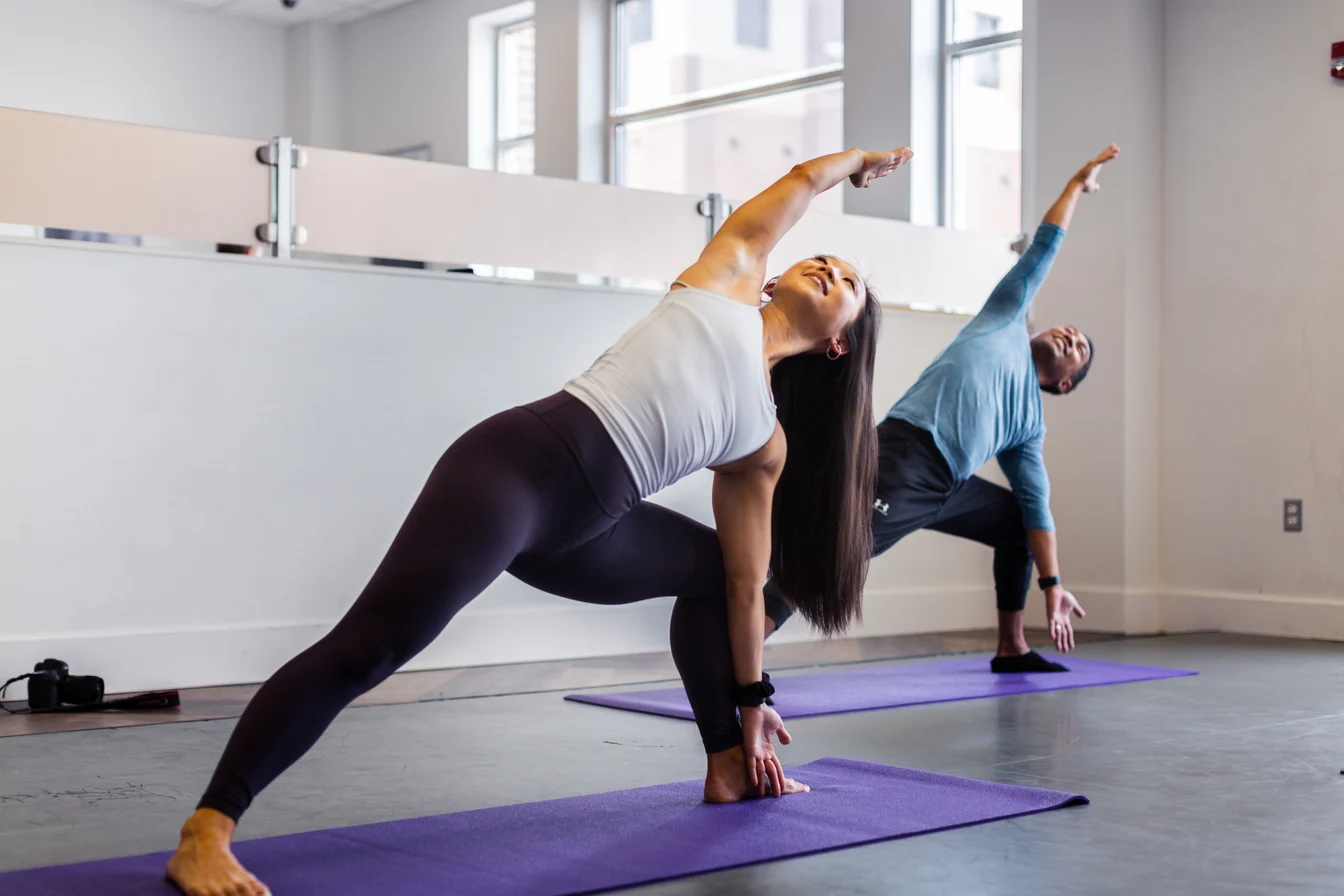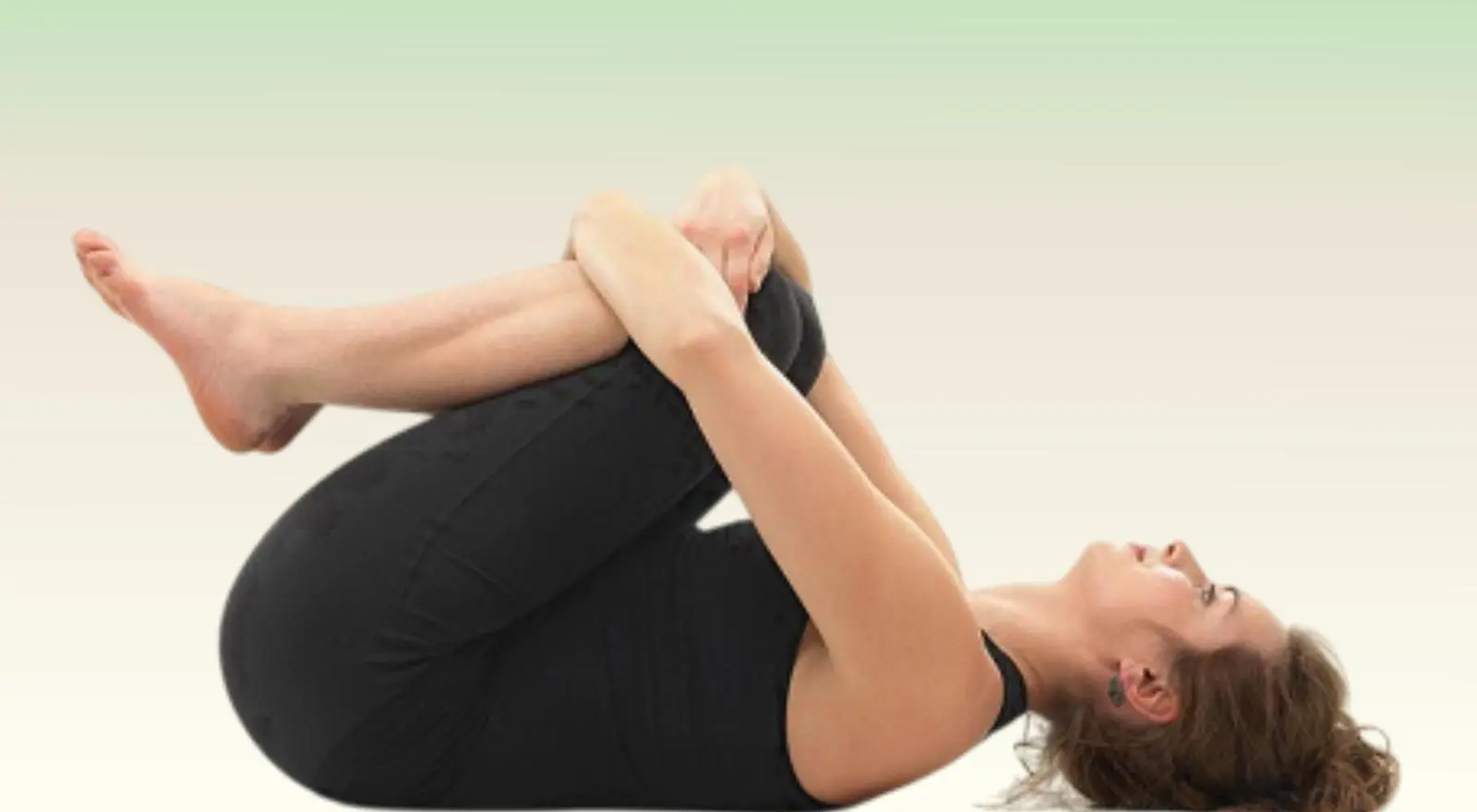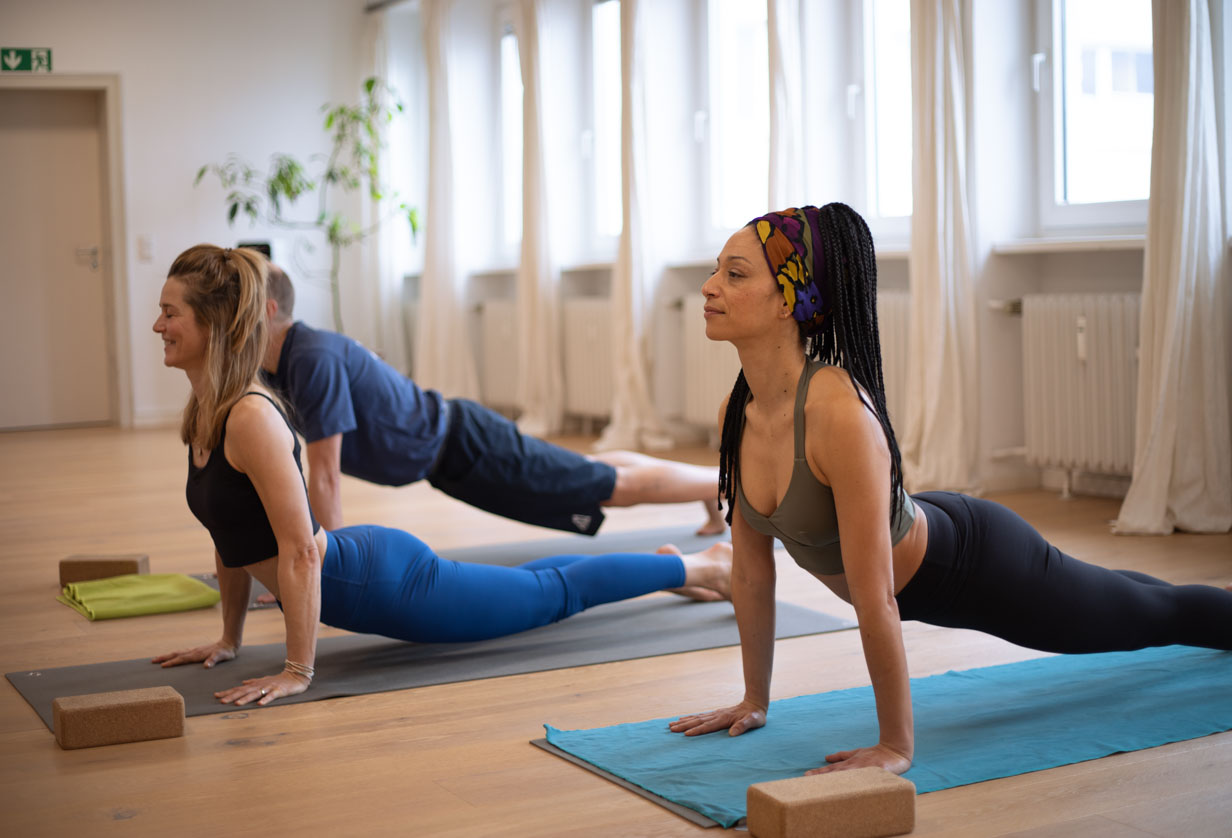Hey there, picture this: It’s a rainy Tuesday evening, and I’m staring down a stack of emails that feels taller than Mount Everest. My shoulders are knotted up like they’ve been in a wrestling match, and that nagging voice in my head is whispering about how I “should” be doing more—more work, more hustle, more everything. Sound familiar? That’s when I first stumbled into a power yoga class back in my early 30s, skeptical as a cat eyeing a cucumber. I figured it’d be some gentle stretching to loosen the tension, but nope—it was a full-on flow that left me sweaty, breathless, and weirdly… alive. That was over a decade ago, and let me tell you, dynamic yoga like power yoga didn’t just untie my knots; it rewired my whole approach to stress, strength, and showing up for myself. If you’re curious about how this energetic twist on traditional yoga can shake up your routine, stick with me. We’re diving deep into what makes power yoga such a powerhouse, backed by real experiences and solid science.
What Is Power Yoga?
Power yoga is essentially yoga on steroids—think of it as the love child of ancient Ashtanga traditions and a high-energy gym session. Born in the 1990s when teachers like Beryl Bender Birch wanted to make intense flows more accessible to Western folks, it’s all about syncing breath with movement in a vigorous, heart-pumping sequence. Unlike slower styles, you transition fluidly between poses, building heat and endurance without pausing for a breather. Classes often last 45 to 90 minutes, and while some are heated for that extra detox sweat, others keep it room-temp for focus on form.
I remember my first class: The instructor cued us into warrior poses that felt like a dance battle, and suddenly, I wasn’t just moving—I was flowing. It’s not about nailing perfect Instagram arches; it’s about harnessing your inner fire through dynamic sequences that challenge your body and quiet the mind. If you’re new, don’t sweat it—power yoga scales to all levels, emphasizing breath (pranayama) to keep things grounded amid the intensity.
The Physical Benefits of Power Yoga
Power yoga packs a punch for your physique, turning what might feel like a stretch session into a full-body workout that rivals cardio and weights. Studies show it elevates your heart rate into moderate-to-vigorous zones, burning calories while sculpting muscle—perfect for anyone ditching the treadmill for something more mindful. Over time, you’ll notice leaner lines, better posture, and that “I could run a marathon… or at least chase my kids without huffing” vibe.
From my own practice, the real magic hit after a few months: My once-achy lower back from desk life started thanking me. Research backs this up—a pilot study on firefighters found power yoga boosted upper body strength, trunk endurance, and flexibility after just six weeks. It’s like giving your muscles a wake-up call, one vinyasa at a time.
Boosting Cardiovascular Health
Your heart doesn’t know it’s “yoga”—it just knows it’s working. Power yoga’s quick transitions spike your pulse, improving circulation and endurance like a brisk run. A 2018 study clocked heart rates in the sweet spot for aerobic gains during a 45-minute class, slashing risks for heart disease.
I laughed when my doctor said my blood pressure dipped after consistent flows—turns out, those sun salutations were my secret cardio hack. Aim for 2-3 sessions weekly to feel the pump without burnout.
Building Strength and Muscle Tone
Forget bulky weights; power yoga uses your body as resistance. Holding planks or crow pose fires up core, arms, and legs, leading to toned muscles and better stability. One review linked regular practice to increased lean mass and reduced injury risk.
Picture me, post-baby, rediscovering my abs in boat pose—it wasn’t overnight, but that subtle shift from “flabby” to “firm” felt empowering. Science says it’s the isometric holds that do it, mimicking strength training for endurance without the gym grind.
Enhancing Flexibility and Balance
Stiff hips? Wobbly ankles? Power yoga’s deep lunges and twists loosen you up while sharpening proprioception—that inner GPS for balance. A Johns Hopkins review found it eases arthritis pain and boosts mobility in folks over 40.
My turning point was tree pose during a shaky class; I teetered like a drunk flamingo but stuck it. Now, it’s second nature, and studies confirm: Eight weeks in, practitioners report better joint health and fewer falls.
Aiding Weight Management
Craving a calorie torcher that doesn’t bore you? Power yoga burns 237 calories in 50 minutes—more than hatha—while curbing emotional eating through mindful breath. A month of daily hour-long sessions dropped BMI in one trial.
I shed 10 pounds without dieting, just flowing away stress munchies. It’s the combo of sweat and serenity that sustains it, per experts.
Mental and Emotional Benefits of Power Yoga
Beyond the sweat, power yoga is a brain balm. That rush of endorphins post-class? It’s not just feel-good fluff—it’s science soothing your nervous system. In a world of doom-scrolling, this practice dials down anxiety, sharpens focus, and fosters resilience, leaving you lighter than when you rolled out your mat.
My “aha” moment came mid-downward dog, worries evaporating like morning fog. A 2017 study echoed this: One session slashed cortisol, the stress hormone, proving dynamic yoga’s edge over static forms.
Reducing Stress and Anxiety
Power yoga flips your fight-or-flight into rest-and-digest mode. Deep ujjayi breaths lower cortisol, while flows release stored tension. UCLA research showed women at Alzheimer’s risk gained memory confidence and reduced inflammation after 12 weeks.
I used to spiral at deadlines; now, a quick sequence grounds me. It’s like hitting reset—participants in a PTSD study saw symptoms vanish after 10 weeks.
Improving Sleep Quality
Tossing at night? Evening power yoga signals your body to unwind, boosting GABA for deeper Z’s. A review tied it to better sleep hygiene, especially for insomniacs.
Post-flow savasanas became my lullaby; I went from four-hour nights to solid seven. Studies say it’s the parasympathetic activation—pure magic for busy brains.
Enhancing Mood and Emotional Resilience
That post-class glow? It’s biochemical bliss. Yoga amps serotonin and dopamine, combating blues. Long-term practitioners report higher life satisfaction, per a qualitative study on vets.
Humor alert: I once flowed through a breakup—warrior pose felt literal. Now, it’s my emotional armor, with research showing mood lifts rival antidepressants.
Power Yoga vs. Other Yoga Styles: A Quick Comparison
Wondering how power yoga stacks up? It’s the energetic sibling in the yoga family—faster than hatha, more athletic than vinyasa. Both build heat, but power emphasizes strength holds over endless flows.
| Style | Pace | Focus | Best For | Calorie Burn (50 min) |
|---|---|---|---|---|
| Power Yoga | Fast, vigorous | Strength, endurance | Fitness enthusiasts | 237 |
| Vinyasa | Fluid flow | Breath-movement sync | Balanced energy | 200-220 |
| Hatha | Slow, steady | Alignment, relaxation | Beginners, stress relief | 144 |
| Ashtanga | Rigorous sequence | Discipline, detox | Advanced practitioners | 250+ |
Vinyasa’s my chill cousin—great for creativity—but power’s the one that leaves me empowered, not exhausted. Choose based on your vibe: Flow for fluidity, power for power.
Pros and Cons of Power Yoga
Power yoga’s not all rainbows and child’s pose. Here’s the real talk:
Pros:
- Full-body torch: Cardio + strength in one sweat sesh.
- Mindful edge: Builds focus amid frenzy.
- Accessible tweaks: Mods for all levels keep it inclusive.
- Community buzz: Classes foster that “we’re in this” bond.
Cons:
- Intensity overload: Beginners might strain if unmodified—ease in!
- Sweat factor: Not ideal for hot climates without AC.
- Time commitment: Flows demand focus; rushed sessions dilute benefits.
- Joint stress: High impact can tweak if form slips—cue a good teacher.
I adore the highs, but skipped a class during flu season—listening to your body is key.
Getting Started with Power Yoga: Tips for Beginners
Diving in? Start simple: Grab a mat, wear comfy layers, and hydrate like it’s your job. Beginners, opt for 20-30 minute online flows to build stamina without overwhelm. Focus on breath—inhale lengthens, exhale grounds—and modify like a pro (knees down in planks, anyone?).
My rookie mistake? Pushing too hard and tweaking a hamstring. Lesson: Honor edges. Warm up with cat-cows, end in savasana. Track progress in a journal—those “I did it” wins stack up.
Essential Poses to Master
- Downward Dog: Inverts for strength; pedal heels for calves.
- Warrior II: Builds legs, opens hips—channel your inner gladiator.
- Plank: Core fire; drop to knees if needed.
- Crow Pose: Arm balance fun—start with blocks for lift.
Practice these daily; they’ll unlock flows like old friends.
Where to Find Power Yoga Classes
In-person? Scout local studios via apps like Mindbody—many offer intro deals. Online gems shine for flexibility: CorePower’s on-demand library has heated vibes at home, while DoYogaWithMe delivers free beginner flows. Peloton’s app packs power sessions with heart-rate tracking.
I stream Bryan Kest’s PowerYoga.com for that authentic edge—affordable and anytime. Pro tip: Trial free weeks to vibe-check teachers.
Best Tools and Gear for Your Practice
Gear up smart:
| Item | Why It Rocks | Top Pick | Price Range |
|---|---|---|---|
| Yoga Mat | Grip for flows | Manduka PRO | $100-120 |
| Blocks | Support for mods | Cork set (2-pack) | $20-30 |
| Strap | Deepens stretches | Cotton loop | $10-15 |
| App | Guided classes | Down Dog (custom flows) | $8/month |
No need for fancy—start basic, upgrade as you glow.
People Also Ask: Common Questions on Power Yoga Benefits
Ever Googled and hit that “People Also Ask” goldmine? Here’s the scoop on top queries:
Is power yoga good for weight loss?
Absolutely—its cardio burn and muscle build rev metabolism. Pair with balanced eats for sustainable drops; one study saw BMI dips after a month.
How often should I do power yoga?
Three times weekly hits the sweet spot for gains without fatigue. Listen to your body—rest days prevent burnout.
Can beginners do power yoga?
Yep, with mods! Start slow; it’s scalable. A beginner series builds confidence sans overwhelm.
What’s the difference between power yoga and hot yoga?
Power’s about vigorous flows (heated or not); hot amps sweat via 100°F+ rooms for detox. Combo for max melt.
Does power yoga help with back pain?
Often yes—core strengthening stabilizes the spine. A Parkinson’s study noted rigidity relief; consult a doc first.
FAQ: Your Power Yoga Questions Answered
Q: How does power yoga differ from regular yoga?
A: Regular (like hatha) is slower and restorative; power’s dynamic, adding cardio for a fitness twist. Both calm the mind, but power energizes.
Q: Is power yoga safe for older adults?
A: Totally, with gentle mods. Studies show balance boosts and stress drops in seniors—start chair-based if needed.
Q: Can power yoga improve my running performance?
A: Runners love it for flexibility and injury prevention. Enhanced endurance from flows translates to stronger strides.
Q: What’s a good at-home power yoga routine for busy folks?
A: 20-minute sun salutations: 5 rounds of A & B, plus warriors. Apps like Alo Moves guide you.
Q: Does it really reduce anxiety long-term?
A: Science says yes—consistent practice rewires stress responses. My decade in? Night-and-day calmer.
There you have it—power yoga’s not just exercise; it’s a dynamic dialogue with your body and breath. From that first sweaty class to now, where flows feel like old friends, it’s taught me grace in the grind. Grab your mat, hit play on a video, and let the energy unfold. What’s your first pose? Drop a thought below—I’d love to hear your flow stories. Namaste, friend.
